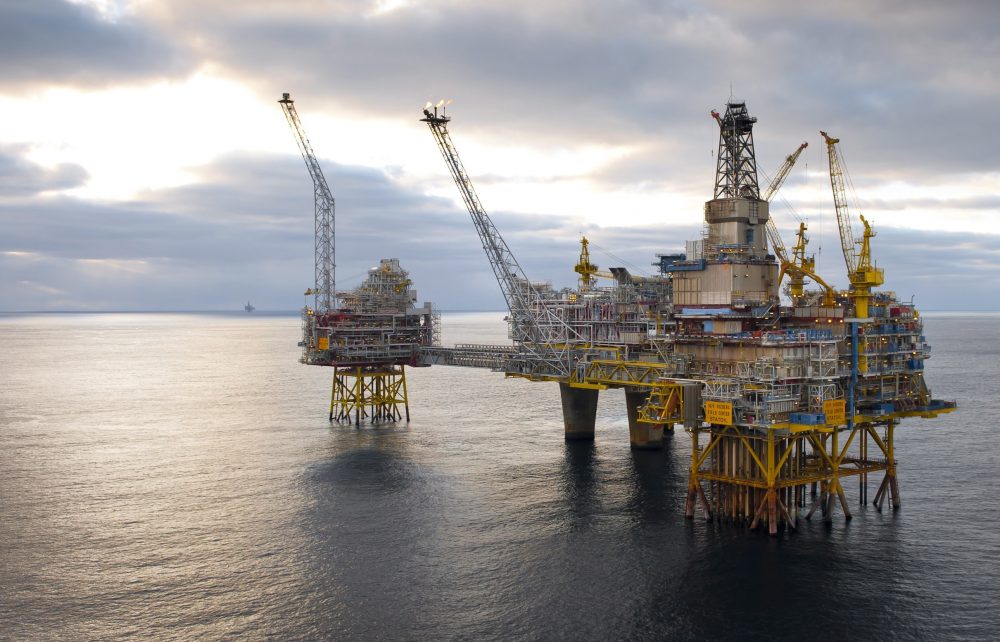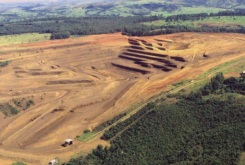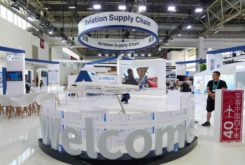U.S. firm Anadarko has taken the final investment decision (FID) on the Area 1 Mozambique LNG project, with first gas expected in 2023. All the required permits have been secured and the consortium developing the project has tied up enough production in long term sale and purchase agreements (SPAs). All eyes will now be on the Rovuma LNG project, which will liquefy its gas production at the same site and which is expected to ship a lot of its LNG to China. China National Offshore Oil Corporation (CNOOC) has already agreed to buy gas from Mozambique LNG.
The Anadarko-led consortium had been expected to take the FDI since it was revealed on 8 May that Mozambique LNG and the government of Mozambique would make a joint statement. The announcement was made at a ceremony in Maputo attended by the President of Mozambique, Filipe Nyusi, on 18 June. It has taken some time for the developers to reach this point, although it is still only nine years since the first big offshore gas find was made in the Rovuma Basin.
The Mozambique LNG consortium comprises Anadarko (26.5%), ENH Rovuma Area 1 (15%), Mitsui E&P (20%), ONGC Videsh (10%), Beas Rovuma Energy Mozambique (10%), BPRL Ventures Mozambique (10%) and PTTEP (8.5%). Area 1 is located next to the coast of Mozambique up to the Tanzanian border and bounded by Area 4 to the east. Gas from the Golfinho and Atum fields operated by the consortium will be piped onshore to an LNG plant at Afungi in Cabo Delgado region. It will be processed by two LNG trains – or liquefaction lines – which will have combined production capacity of 12.88 million tonnes/year.
A total of $25 billion will be invested in the project, making it the biggest investment in Mozambique’s history, far bigger than any of the coal projects sanctioned over the past few years. Financing will be provided by $14 billion of debt and $11 billion of equity. Although the Nigeria LNG project is bigger, it was developed in phases, so the $25 billion price tag makes Mozambique LNG the most expensive oil or gas project ever developed in Sub-Saharan Africa. Moreover, analysts Wood Mackenzie expect Mozambique LNG and Rovuma LNG to be two of the three most valuable oil and gas projects to be given the go-ahead worldwide this year.
Sale and purchase agreements
SPAs have now been signed covering 11.1 million tonnes/year of output on Mozambique LNG, equivalent to 86% of the two trains’ production capacity, and the remaining production is likely to be sold on the spot market. The project has now secured SPAs with companies based in four out of the five biggest LNG markets in the world. Frank Harris, head of LNG Consulting at Wood Mackenzie, said: “Flexible commercial arrangements, including an innovative co-purchase agreement with Tokyo Gas and Centrica, have been instrumental in securing the project a roster of high-quality customers in a crowded LNG market”.
Most recently, the final piece of the jigsaw fell into place when Mozambique LNG signed an SPA with Jera Co and CPC Corporation for the delivery of 1.6 million tonnes/year over 17 years. The other SPAs are with Pertamina (1.0 million tonnes/year), Bharat (1.0 million tonnes/year), Shell (2.0(million tonnes/year), Tokyo Gas and Centrica (2.6 million tonnes/year), CNOOC (1.5 million tonnes/year) and EDF 1.2 million (tonnes/year). A preliminary deal was signed with Thailand’s PTT for 2.6 million tonnes/year but has not been converted into a binding agreement.
The CNOOC contract is for 13 years. Mitch Ingram, Anadarko executive vice president, international, deepwater & exploration, commented: “We are pleased to announce this SPA with CNOOC, an important global energy player in one of the biggest and fastest growing LNG markets in the world. This deal gives China’s largest LNG importer access to Mozambique LNG’s world class gas resources, which are strategically located off the east coast of Africa, and will provide China with a clean source of energy for years to come.”
A variety of contractors have already been appointed to work on the project, including Technip, which is developing the subsea gas gathering system, and a consortium of McDermott, Chiyoda and Saipem, which hold the engineering, procurement and construction (EPC) contract for the LNG plant itself. Anadarko Chairman and CEO, Al Walker said: “The Anadarko-led Area 1 Mozambique LNG project is ideally located to meet growing demand, particularly in expanding Asian and European markets.”
Possible expansion
The consortium is still careful to describe the two trains as “initial trains”, indicating that they are still hopeful of developing further trains. The parallel Rovuma LNG project will have production capacity of 15.2 million tonnes/year in the first instance but it too could be expanded. There certainly seems to be sufficient gas in place in Mozambique for more trains but their development will depend on the direction of international LNG prices, which have fallen so far this year. It has been suggested that the Afungi plant could eventually have production capacity of 50 million tonnes/year. This is a huge figure: by comparison, the world’s biggest LNG producer, Qatar, ships 77 million tonnes/year.
On 9 May, Anadarko concluded a definitive merger agreement with Occidental Petroleum Corporation, paying $1 billion to end its previous agreement to be taken over by Chevron. Although regulatory and shareholder approval is still required, the merger is expected to be completed in the second half of this year.
The Anadarko board considered the Occidental offer of $59 a share in cash, plus a stake in Occidental, to be superior to that of Chevron. The place of Mozambique LNG in this transaction is still to be decided, although Occidental has reached an outline agreement to sell on Anadarko’s African assets – including its stake in Mozambique LNG – to French firm Total for $8.8 billion. The deal is not expected to be concluded until next year.
The other big LNG consortium is scheduled to take the FID on its Rovuma LNG scheme later this year. It will pipe gas from its Area 4 fields to Afungi. Rovuma LNG did not compete with Mozambique LNG for customers as all output from its trains is expected to be sold to equity partners.
Rovuma LNG comprises Mozambique Rovuma Venture, with a 70% stake, plus Kogas, Galp Energia and Mozambique’s own Empresa Nacional de Hidrocarbonetos, each with 10%. Mozambique Rovuma Venture itself is owned by Eni (35.7%), ExxonMobil (35.7%) and China National Oil and Gas Exploration and Development Corporation (CNODC) (28.6%), so a large proportion of its output is expected to be shipped to China.
Economic benefits
At the Mozambique LNG signing ceremony, Walker said that the project would double Mozambique’s GDP, which stood at $12.33 billion in 2017. The government of Mozambique could have been tempted to ensure that the project proceeded ahead of the October elections, particularly given the damage that has been inflicted on its economic reputation by the revelations over hidden debts.
Walker described the LNG project as one of the most significant projects that any company had ever undertaken given its scale and the potential benefits for Mozambique. In addition, in a statement Anadarko revealed that the project is expected to have a significant domestic gas component for in-country consumption to help fuel future economic development. This will be key to ensuring that the country benefits as much as possible from its LNG boom. Ringfencing a small proportion of gas production on Areas 1 and 4 for domestic use could help to improve the power supply situation by supplying new gas-fired generating capacity, provide feedstock for new industrial enterprises and feed fertiliser factories that could revolutionise agricultural production by increasing harvests.
At the FID ceremony, President Nyusi said: “This is a historic day for the people of Mozambique. Today’s sanctioning of the Anadarko-led Area 1 Mozambique LNG project solidifies a path toward the creation of thousands of jobs for our people, significant economic growth for our nation, and the potential to be one of the world’s largest providers of cleaner energy for decades to come. It is truly one of the most important and transformational projects in our country’s history.”
A total of 5,000 workers are currently employed on projects associated with the Afungi scheme: at the plant site, building an airport and the Afungi-Palma highway, and working on resettling people who have lost their homes to make way for the project site. The government of Mozambique hopes that the project will create 5,000 direct and 45,000 indirect jobs. The Mozambique LNG consortium is taking the lead on constructing common use facilities at the project site, including the terminal where vessels will be loaded with LNG.
The LNG industry, in the form of Mozambique LNG, Rovuma LNG and Eni’s much smaller Coral floating LNG project is expected to generate $95 billion in revenue for the government of Mozambique over 25 years. This could have a huge impact on national economic development and help to lift the country out of the ranks of the world’s poorest countries, providing the money is well spent and the government does not ignore other parts of the economy.
Under a new agreement the government has reached with its Eurobond creditors, the creditors will no longer be entitled to take a proportion of government revenue from LNG exports. However, the government will use the gas revenues to make repayments once they come on stream.




